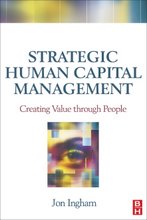
“The main disadvantage of internal recruitment is that the pool in which you are fishing for talent is limited, leading to a toleration of candidates who are good enough but not great - and that's not good enough!”
It’s a good suggestion with an element of truth and has also got me thinking because I’m shortly going to be inputting on a panel from the other side of the fence (not sure if that’s a mixed metaphor or not!).
This is a session on 19th July being organised by Monster, with Keith Robinson of HR Buzz, which will be the first of a series of sessions called Monster Buzz. This one will also feature Isabella Hung at TMS, Lee Moody from Rank, Matthew Jeffery from Autodesk, Marilyn Davidson from APSCo and Steve McNally from The Equality Law Group.
The first thing to note is that this is obviously a rather theoretical question – in practice you need to do both - the HR Magazine article calls this a balanced approach. And actually the use of the word ‘balance’ is appropriate. To buy or to build, including through internal recruitment, isn’t a choice – it’s a matter of balance: slightly loading the scales to give a little more focus to buy or build depending upon organisational needs (the main need being either to maintain current performance if things are going well – by tipping the balance towards internal moves - or to provide new insights and perspectives if not everything is so rosy – by tipping the scales the other way).
Doing both is also central to the concept of integrated talent management which I’ve been blogging about here. You can also think about there being a similar need to integrate recruiting within HR as there is for integrating learning into HR, which I presented on at Learning Technologies earlier this year.
However, if this is all I said it’d be a rather boring panel. So I’m going to be coming down on the side of talent development. And I actually find this a rather easy argument to make – talent development is simply a more strategic activity than talent acquisition is.
Talent acquisition provides our undeveloped people – our raw materials if you like (OK, neither do I, but stick with me for a minute). The quality of these raw materials is hugely important but it’s just not enough. The even more important activity is what the organisation does with these raw materials – how it converts these into something more useful for the business to use.
There’s a direct analogy to the business value chain. Businesses also buy raw materials or other inputs and then transform these into something more valuable which can be sold to customers. Procurement is therefore a vital activity, but even with advances in areas like supply chain management there are very few businesses which compete on they way they procure raw materials. Most do this on the way they add value to these materials through some transformation.
Organisations don’t compete on the way they do recruitment either. They compete on the transformation of their new joiners into an aligned and engaged workforce. Much of this transformation is down to the role of talent development, including the way that people are progressed up and across the organisation. And the need to focus on the transformation rather than the raw materials becomes ever greater then more we focus on competing through organisational capabilities.
That’s because competition rests upon differentiation. If we recruit the same people as our competitors, if we have the same culture as them, we simply can’t compete upon these things. And OK, it may be possible for one organisation to recruit better or different people simply based upon its employer brand or the speed of its recruiting activities etc. But the difference is likely to be quite small. The key difference is much more likely to come from the transformation of the people we’ve hired and the creation of organisational capabilities we can use.
You’ll be able to read more arguments for and against this perspective on the Monster Thinking blog leading up to the debate.
A final note: I hope I haven’t offended any of my readers in recruitment! As I noted earlier on, this is a rather theoretical debate. We need both recruitment and development and the real need is to have them both better integrated together; both focused on achieving the same thing – and for both of them to be doing this more strategically.
- Consulting - Research - Speaking - Training - Writing
- Strategy - Talent - Engagement - Change and OD
- Contact me to create more value for your business
- jon [dot] ingham [at] strategic [dash] hcm [dot] com
.







































